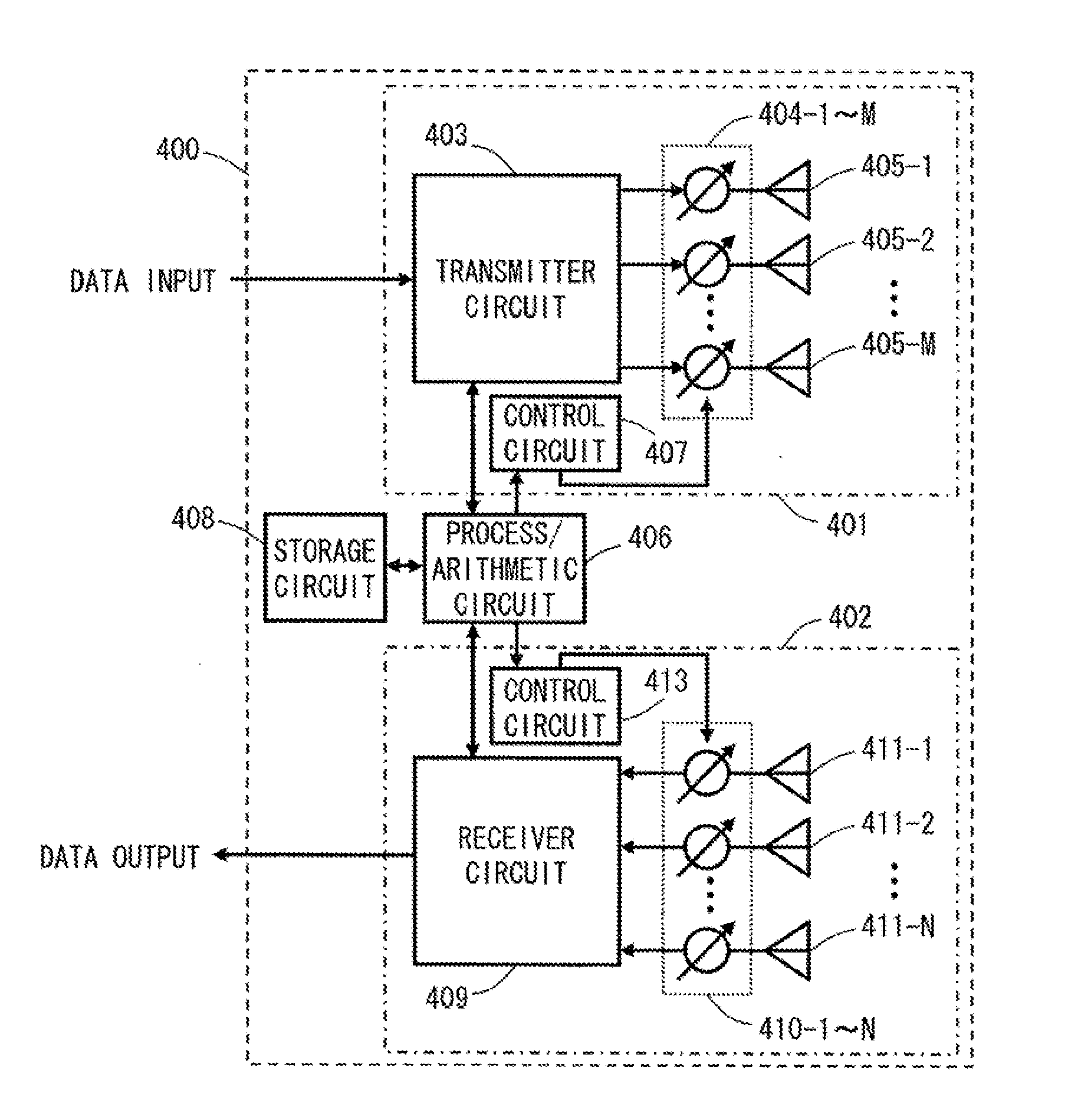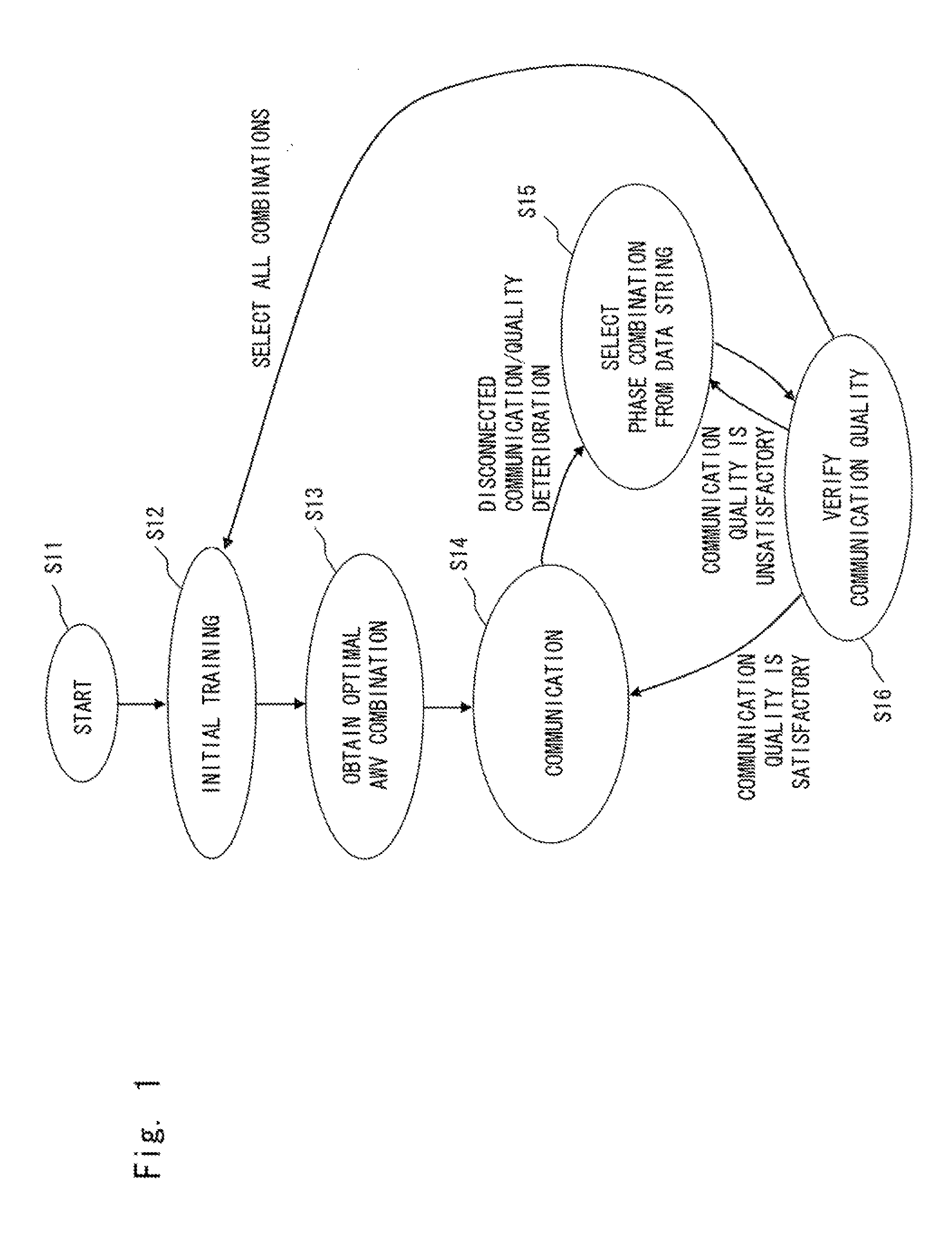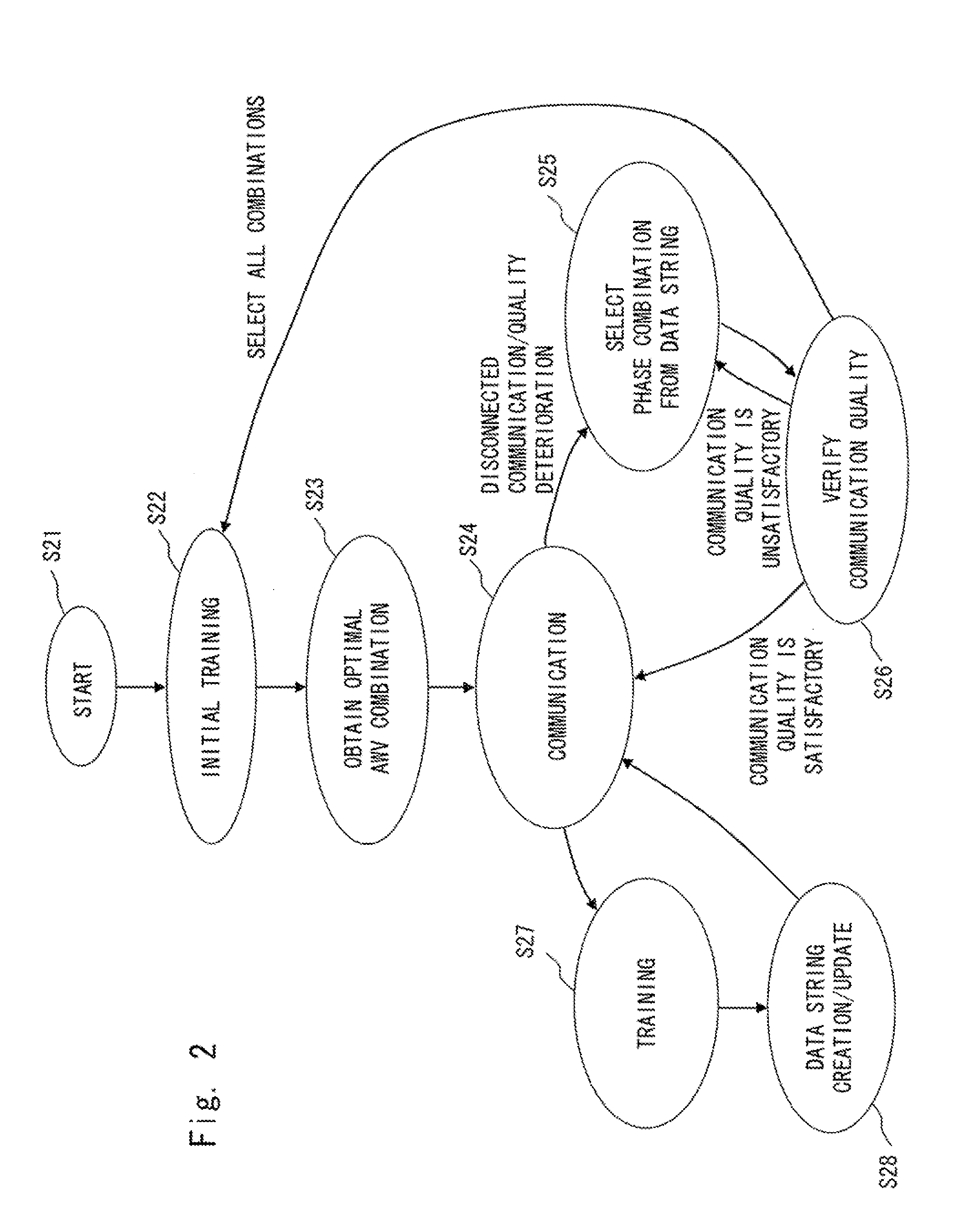Control method of wireless communication system, wireless communication system, wireless communication apparatus, and adjustment method of array weight vector
a control method and array weight technology, applied in the direction of antennas, electrical equipment, radio transmission, etc., can solve the problems of increased frequency, difficult transmission, and changing environmen
- Summary
- Abstract
- Description
- Claims
- Application Information
AI Technical Summary
Benefits of technology
Problems solved by technology
Method used
Image
Examples
first exemplary embodiment
[0070]A first exemplary embodiment of the present invention is explained hereinafter with reference to a transition diagram shown in FIG. 1. It should be noted that a device configuration shown in FIG. 5, for example, can be used as the device configuration of the wireless communication system according to this exemplary embodiment.
[0071]In a state S12 in FIG. 1, transceivers 400 and 500 perform an initial training to optimize AWV control circuits 404-1 to 404-M, 410-1 to 410N, 504-1 to 504K, and 510-1 to 510L provided therein. In S13, candidate AWV combinations are calculated by a process / arithmetic circuit 406 or 506 or by cooperation of these two circuits. The calculation method for candidate AWV combinations in S13 will be explained later. The obtained candidate AWV combinations are stored as a data string in both or either of the storage circuits 408 and 508.
[0072]In S14, one of the candidate AWV combinations obtained in S13 is selected, and communication is performed by using ...
second exemplary embodiment
[0125]A second exemplary embodiment of the present invention is explained hereinafter with reference to a transition diagram shown in FIG. 2. It should be noted that a configuration similar to that shown in FIG. 5 can be used as the configuration of a wireless communication system in accordance with this exemplary embodiment. Each of states S21 to S26 and transition conditions therebetween in FIG. 2 are similar to S11 to S16 and their transition conditions shown in FIG. 1, which are described above with the first exemplary embodiment. Therefore, detailed explanation of S21 to S26 is omitted.
[0126]In S27 in FIG. 2, an additional second training is performed after transition from the state (S24) where the communication is continued. The second training may be periodically performed or may be performed during idle times in which there is no data to be transmitted / received.
[0127]In S28, the process / arithmetic circuit 406 and 506 calculate a plurality of candidate AWV combinations again....
fourth exemplary embodiment
[0132]A fourth exemplary embodiment is characterized in that the training and the acquirement / establishment of AWV combinations are performed at a low-rate (with a narrow band) and actual communication is performed at a relatively high-rate (with a wide band). The other operations may be performed by using the method in accordance with one of first to third exemplary embodiments.
[0133]In millimeter wave communication, since free space propagation losses are large, the received power is expected to be small. Therefore, if AWVs on the transmission side are set so as to generate an omni or quasi-omni pattern in the training, there is a possibility that a sufficient CNR (Carrier to Noise Ratio) is not achieved. Accordingly, it is expected that the use of the low-rate (narrow band) having better reception sensitivity provides advantageous effects such as making the training possible and improving the accuracy. It should be noted that the “use of low speed (narrow band)” means to narrow t...
PUM
 Login to View More
Login to View More Abstract
Description
Claims
Application Information
 Login to View More
Login to View More - R&D
- Intellectual Property
- Life Sciences
- Materials
- Tech Scout
- Unparalleled Data Quality
- Higher Quality Content
- 60% Fewer Hallucinations
Browse by: Latest US Patents, China's latest patents, Technical Efficacy Thesaurus, Application Domain, Technology Topic, Popular Technical Reports.
© 2025 PatSnap. All rights reserved.Legal|Privacy policy|Modern Slavery Act Transparency Statement|Sitemap|About US| Contact US: help@patsnap.com



